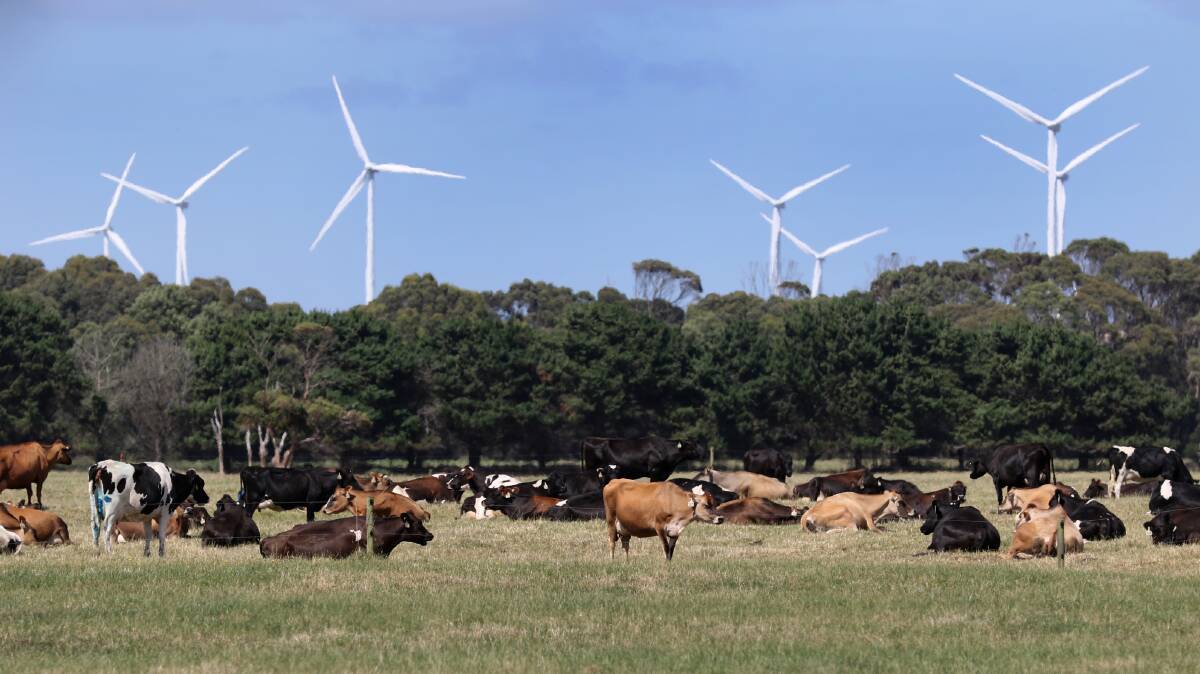
There is a growing consensus about the need for more urgent and aggressive climate action.
Subscribe now for unlimited access.
$0/
(min cost $0)
or signup to continue reading
World leaders are preparing to gather in Glasgow to commit to deep emissions cuts while businesses are investing trillions globally in new low-and zero-carbon technologies, products and processes.
Here in Tasmania, as part of its five-yearly independent review of climate policy, the state government is proposing a commitment to achieve net-zero emissions in 2030.
By comparison with other jurisdictions in Australia and around the world, this is an ambitious target, but the rationale behind it requires a bit of explaining.
For one thing - and as opposition parties were quick to point out - Tasmania already achieved net-zero in 2013 and has maintained that enviable status in all but one year since.
The questions of how we got to net-zero in the first place, why a net-zero by 2030 target is being proposed, and whether we're likely to be able to hit it, have complicated answers which require careful analysis.
To help with this task the University of Tasmania, drawing on its deep expertise in climate research, has today released a discussion paper, Towards a climate-positive Tasmania, examining these issues and their implications for Tasmania.
Importantly, the analysis also considers the likely impacts of climate change and emissions reduction on specific communities and industries, as well as the long-term policies and strategies needed to ensure Tasmania successfully transitions to a prosperous and truly climate-positive society.
Tasmania's net-negative emissions status is largely attributable to our renewable electricity assets and to carbon stored in our large forest estate.
In other words, the volume of greenhouse gases we emit into the atmosphere is offset by the volume drawn back down and stored in forests or soils.
This means Tasmania's transition to net-negative emissions, from the mid-2000s to 2013, was not due to a decline in emissions, but rather because of an increase in carbon stored in our forests over that period.
Critics argue adopting a target we reached seven years ago lacks ambition, but modelling presented in the government's Independent Review suggests maintaining Tasmania's net-negative emissions profile will require significant emissions cuts.
The reason for this is the relatively precarious nature of land use and forestry offsets.
Our analysis of data presented in the Independent Review, alongside the best available climate science, suggests a gross emissions reduction of up to 37 per cent will be required to confidently meet the government's new net-zero in 2030 target under the worst-case scenario presented in the review.
Given Tasmania's gross emissions have been stable for 30 years, achieving the reduction will be a big challenge.
Nevertheless, it is one we can achieve with a collaborative approach.
Not only will emissions reduction be necessary to maintain our net-zero target, it will also help future-proof our key industries and enable Tasmania to capitalise on the rapid decarbonisation of the global economy.
The stark reality is the transition away from fossil fuels and other sources of carbon emissions is gathering pace.
Tasmania must choose between proactive decarbonisation that opens the door to increased investment, innovation, and growth in future industries, or risk being left behind as the world moves on to embrace low-or zero-carbon industries and technologies without us.
The good news is Tasmania's renewable energy assets and expertise give us a head start in the race to reduce our industrial, transport and agricultural emissions.
In manufacturing and heavy industry, the challenge is to use renewable energy - including emerging green hydrogen technology - to reduce emissions and establish Tasmania, and Bell Bay in particular, as a hub for zero-carbon industry and innovation.
We must also adapt the products we design and manufacture to capitalise on growing global demand for zero-carbon technology.
The combination of a cool temperate climate, abundant water resources and irrigation means Tasmanian agriculture is relatively well-placed to adapt to climate change, but farming practices will have to change dramatically over the coming generation.
Our most important emissions reduction opportunities in this sector may lie in the use of innovative feed supplements to reduce methane emissions from livestock, which account for more than three quarters of total emissions from agriculture.
Asparagopsis seaweed, which is being grown right in Tasmania, has demonstrated capacity to reduce livestock emissions by as much as 90 per cent while also increasing productivity for farmers.
Commercialising these innovations and scaling production should be a high priority.
Creating a climate-positive society and economy will also enhance Tasmania's brand and underpin export growth in an increasingly carbon-conscious world.
Our tourism sector in particular would benefit as it recovers from the pandemic, especially if we can become a low-carbon destination.
The challenges associated with climate change are immense, but Tasmania is one of the few places on the planet that has already achieved a net-zero emissions profile which, combined with a deep commitment to sustainability, provides us with a unique opportunity to embrace a truly climate-positive strategy which can serve as an example to the rest of the world.
- Professor Richard Eccleston and Dr Lachlan Johnson are the primary authors of Towards a climate-positive Tasmania.

